Tuning by harmonics is quite a popular method used today. However, I recommend you use this method in conjunction with other tuning methods to tune your instrument properly. As discussed in the Tuning Methods Page, no instrument is perfect, so to compensate for any slight instrument defects, a variety of tuning methods should be used. A string may be harmonically in tune, yet the fretted notes will still be out of tune due to the neck irregularities.
Again, a reference note must be used to tune your first string. Either a tuning fork, guitar tuner, keyboard or whatever you consider to be reliable, maybe your ear ?? or if you can sing in perfect pitch, your voice !!
Now that our first string is in tune, play the note B at the 7th fret on the first string, using your 4th finger. Now while the B note is still ringing play the B harmonic, using your first finger at the 5th fret on the 2nd string. Adjust the 2nd string harmonic to match the fretted B note.
Once the second string is in tune, play the note G at the 8th fret on the 2nd string, again using the little finger. While the G note is ringing play the G harmonic, using your first finger at the 5th fret on the 3rd string. Tune the 3rd string harmonic to the fretted G note.
Now play the note D at the 7th fret on the 3rd string, then the D harmonic at the 5th fret on the 4th string. The idea is to hear the fretted note and the harmonic together. While both notes are ringing tune the string that the harmonic is on.
Using the same procedure, play the note A at the 7th fret on the 4th string and the A harmonic at the 5th fret on the 5th string.
Finally, play the E note at the 7th fret on the 5th string and the E harmonic at the 5th fret on the 6th string. Easy isn't it !!
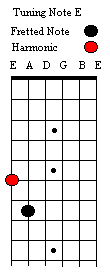 |
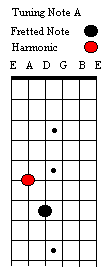 |
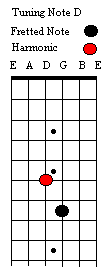 |
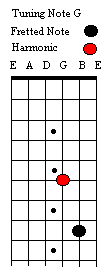 |
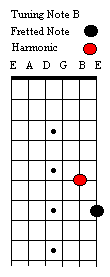 |